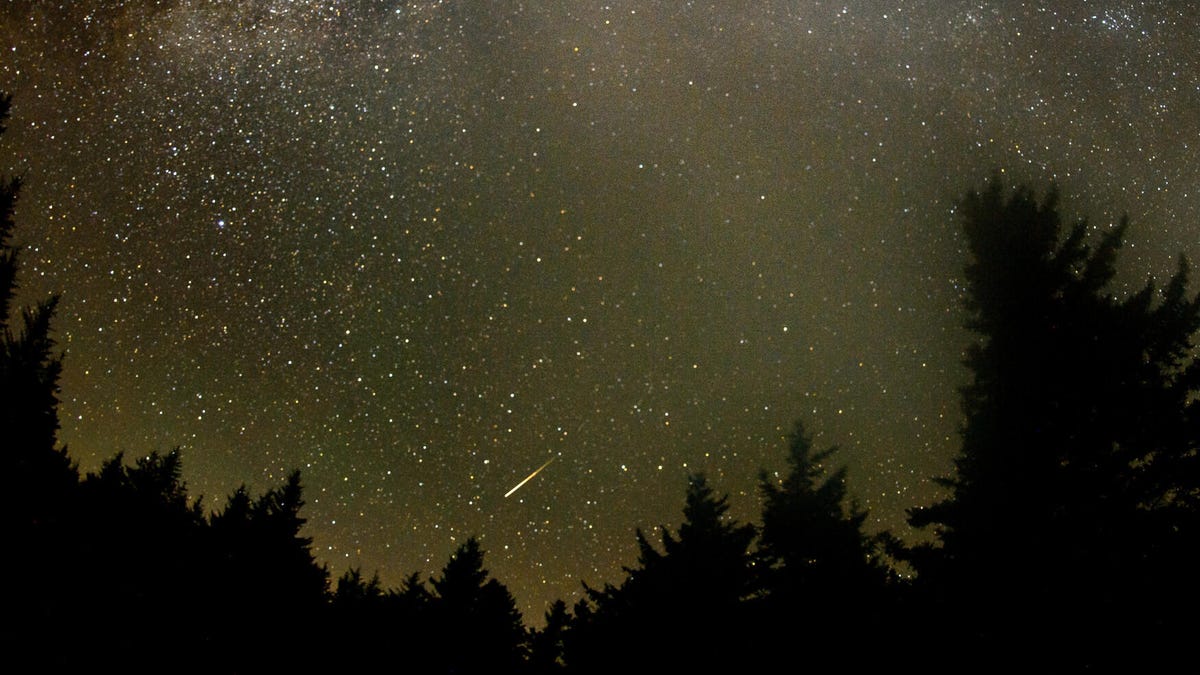Perseid meteor shower 2021 still active: How to watch the shooting stars
We're past the peak, but the Perseids are still going through late August.
The Perseid meteor shower is bringing "shooting stars" to the night sky for much of August. It's a gorgeous display of celestial fireworks stargazers won't want to miss. Here's when you can see the Perseids for yourself and how to catch up with a livestream from the shower's peak.
The Perseids -- "considered the best meteor shower of the year," according to NASA -- are active until Aug. 24, though meteor activity peaked on the night of Aug. 11 and morning of Aug. 12. You can still get lucky and catch the celestial show, though there won't be as many meteors as during the peak.
The Perseids are popular for their reliability and the potential for spectacular fireballs. The actual number of shooting stars you might see will vary depending on cloud cover, light pollution and location. According to NASA, if you are out in the country in the US with no clouds, you might catch around 40 Perseids in the pre-dawn hours on peak nights.
How to pronounce 'Perseids'
The meteor shower gets its name from the constellation Perseus, which references the mythological Greek hero Perseus, famous for taking on snake-haired Medusa. The shower is similarly to "per-see-id." To hear it, check out this NASA skywatching video where the narrator drops the name right in the beginning:
On July 26, NASA's Marshall Space Flight Center shared an image of a streaking Perseid meteor spotted by a camera at the Mount Lemmon Observatory in Arizona.
Last night, our meteor-tracking cameras at Mount Lemmon Observatory spotted their first Perseid of 2021!
— NASA Marshall (@NASA_Marshall) July 26, 2021
The Perseids are set to peak in mid-August—stay tuned for more skywatching updates! pic.twitter.com/ScS2Msyz83
Fireballs can happen when larger pieces of comet debris strike the atmosphere, creating long, bright streaks, the kind that make you say "Whoa!" Ready to get excited? Check out these photos from last year's shower:
How to view Perseids
At its simplest, viewing the meteor shower is just about heading out at night and looking up, but there are some steps you can take to improve your chances at catching a good show. You're in luck if you're a super-early riser. The pre-dawn hours are a prime viewing time, but NASA also says you can see the meteors as early as 10 p.m. local time.
Some of the biggest obstacles to good meteor viewing are cloudy weather and light pollution. Aim for a clear night and try to get away from city lights. A hammock, blanket or a chair that leans back will save you from craning your neck. Give your eyes plenty of time to adjust to the darkness.
You can spot the meteors anywhere in the sky, though they get their name because they appear to be radiating from the constellation Perseus. To find Perseus, check out a stargazing app that will help you locate the constellation. Perseus isn't the actual source of the shower, but it can be helpful in tracking down the sometimes elusive streaks of light.
Watch a Perseids livestream
NASA hosted a livestream during the peak, and you can rewatch the video.
How often is the Perseid meteor shower?
One of the joys of the Perseids is that it's a reliable show that comes around every year at about this time. You don't have to stick to the exact mid-August peak to enjoy the action. A dark spot on a clear night can deliver a worthwhile viewing experience throughout the Perseids' visit. Catch those shooting stars while you can.
Follow CNET's 2021 Space Calendar to stay up to date with all the latest space news this year. You can even add it to your own Google Calendar.


